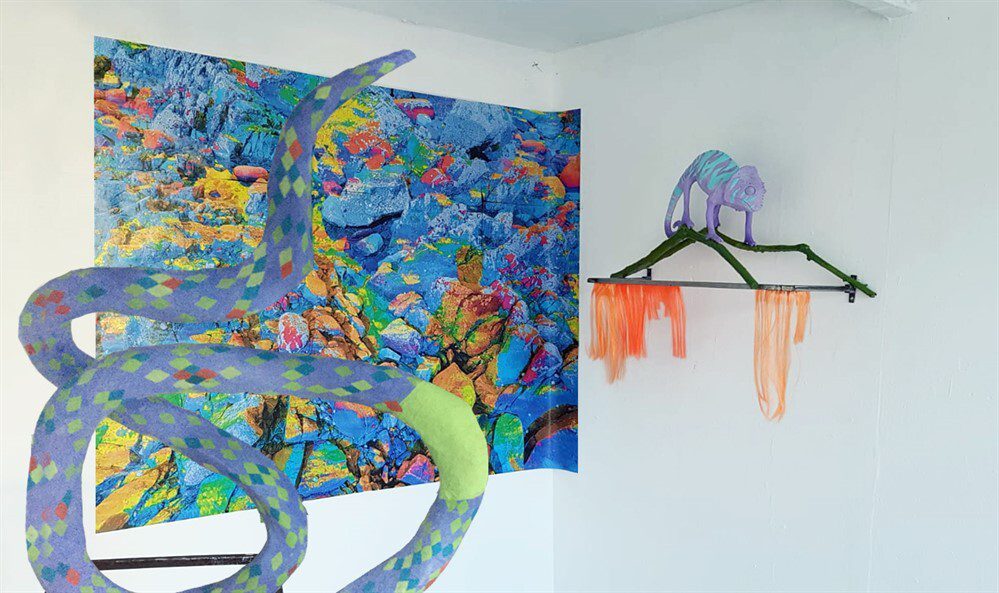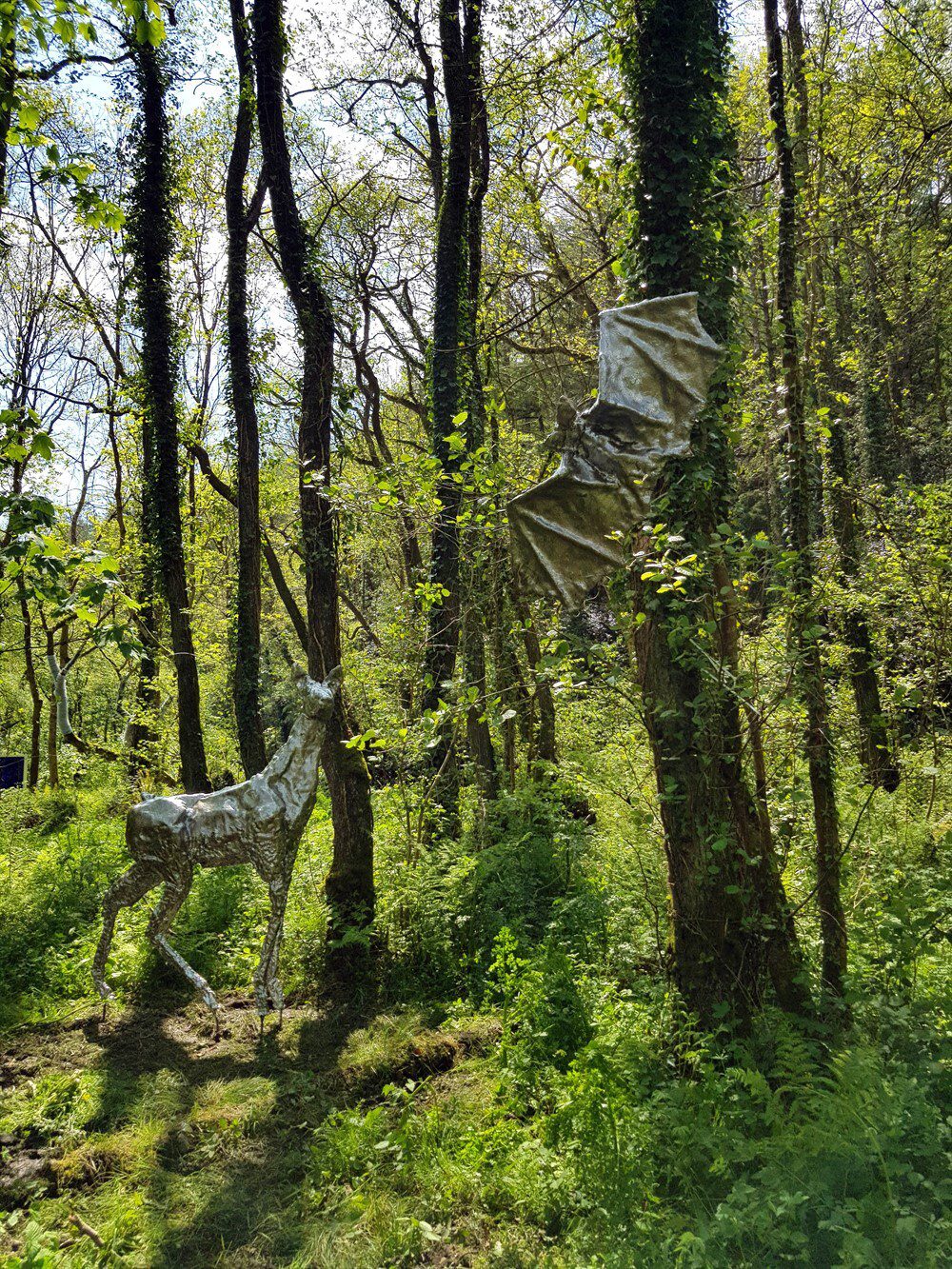Artist Spotlight: Jessica Wetherly

Jessica Wetherly, //Laboratory:{, 2019
Tell us a bit about yourself and your practice, how would you describe the work that you do?
I am an artist and sculptor with a studio practice based in London. My recent work presents creatures in curious and surreal landscapes with a sci-fi aesthetic that evoke questions of agency as we face the ecological and climate breakdown. The objects and images build worlds that investigate the blindness of anthropocentric society, using an intuitive and playful range of everyday materials haunted by human touch.
A training in figurative sculpture forms the foundation to my practice, whilst teaching part-time reinforces my skills, like a musician practising their scales. I spend a lot of time outside, walking, hiking, cycling and camping; I find that it's the only place I can leave the process of work behind for a while, yet continue the opportunity for expanding curiosity and creative thinking.

Some of your exhibited work recalls the sorts of display you’d find at a natural history museum, almost a slightly comic form of taxidermy. I wondered how you negotiate this history of display? A history of humans attempting to present, control and classify a chaotic natural world.
I have fond memories of running through big museums, seeing dinosaurs and other fascinating creatures - as a child I wanted to be a zookeeper. Now I am creating my own zoo without bars, so the barriers between worlds can be perforated. The traditions of museum and taxonomy are very present in British culture, and within this lies the enormous challenge of confronting privilege, colonisation and the aftermath of empire - I use soft colour palettes to provoke a naive, childlike perspective and elevate everyday materials, to grant access to these formidable frameworks.
I am fortunate that I have been able to see flora, fauna and many historic artworks in their original context; I am captivated by wild spaces, the magic of ancient objects and animal allegory - revealing something of the stories told by one to another in another time. It reminds me that nothing is fixed. Museums are full of encounters: we marvel at objects made by someone, somewhere; we encounter disembodied voices, lapses in memory, selves that are others. I am interested in this fragmentation of experience.

Do you think technology holds the potential for us to overcome the environmental problems created by our anthropocentric world view?
I don’t believe humanity and technology can be separated. From the humble spoon to a smart device, they are a superpower that has enabled us to populate every environment on this planet. Inevitably technological advancement will play a part in positive progress, but I worry that it is also an invisible fire of destruction and one that we keep fanning the flames. I think that we have an obligation to re-evaluate and reinvent how we use technology for environmental preservation and positive social liberation not just for capitalistic progress.
In my work I look at the failure of a human-centred perspective. With a global viewpoint there is opportunity for the digital world to share resources and invent new ways of being. I embrace the idea of remembering what we already have. I would like everyone to nourish the soil, stop monoculture farming and rebuild varied ecosystems that allow for adaptability and a flourishing of all living things.

Can you tell us more about the piece Gaia? The image of the work is very striking.
This sculpture was commissioned by 'Pete the Monkey', an eco-friendly arts and music festival in Normandy. I am intrigued by religious paraphernalia and started collecting Virgin Mary imagery a few years ago. It was a joy to reinvent a Mother Earth icon, based vaguely on the Virgin de Guadeloupe however I wanted to give a sense of the solidity of an ordinary woman. She has six hands, referencing Hindu and Buddhist gods, but also the concept of being busy with your hands and the potential of time lapse. I am intrigued by the hybrid aesthetics that emerge within our ever increasing globalised world. To me, iconography is an incredibly powerful and direct means of expressing gratitude and respect for the phenomenon of the world around us.

How do you think your background in traditional sculpture techniques and modeling has affected the way you approach your work?
The practise of making by hand is critical to my practice. I want my practice to be closer to that of ancient peoples who were more in touch with the natural world and I try to nurture a symbolic approach to making as an innate human response - making as a means of understanding. My traditional training has given me a fluency with material, in shape and form. It also means that I navigate the way I see the world through interpreting the architecture of space. I experience space with a very three dimensional perspective. I am constantly thinking about where a form is going and how it connects to another. I have investigated many different methods and find ways to evolve them into my own modes to distort and imagine new shapes.

Which artists working at the moment do you admire?
I am really moved by strong female voices that have emerged and who feel particularly accessible. I value Hito Styerl’s work and writing on technology. I am interested by the magic of Tai Shani, who is so empowering both in her incredibly complex installations and the way she constantly challenges capitalist and patriarchal frameworks. Also Marguerite Humeau, who is only a few years older than me, but her work blends myth and science in a similar method of thinking associated with archaeology and museum culture.

What do you have coming up?
I am currently on a residency at Korai Project Space in Nicosia, Cyprus, the show opens at the beginning of May. I have a group show with Subsidiary Projects and San Mei Gallery in June in London. The exhibition 'ONE' is an exploration of loneliness and isolation, considering what it means to be solitary, outside of and isolated within our contemporary, globalised and digital world. Later this summer I have a show at Broadway Gallery in Letchworth Garden City, this project is delayed due to the current unprecedented circumstances. 'Emergency' - an exhibition at Aspex Gallery in Portsmouth due to open at the end of this month, has also been postponed until July. It is a difficult time for many artists with paid work cancelled, exhibitions postponed and our ever precarious position de-stabilised further. We also have an incredible ability to find a way to survive adversity and I intend on continuing to make work and find methods of making it both accessible.
More Information
Artists
Tags, Topics, Artforms, Themes and Contexts, Formats
Share this article
Helping Artists Keep Going
Axis is an artist-led charity supporting contemporary visual artists with resources, connection, and visibility.


